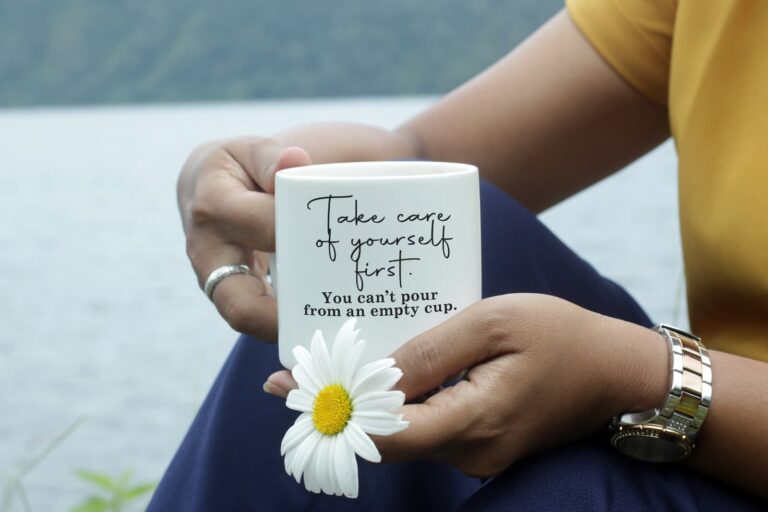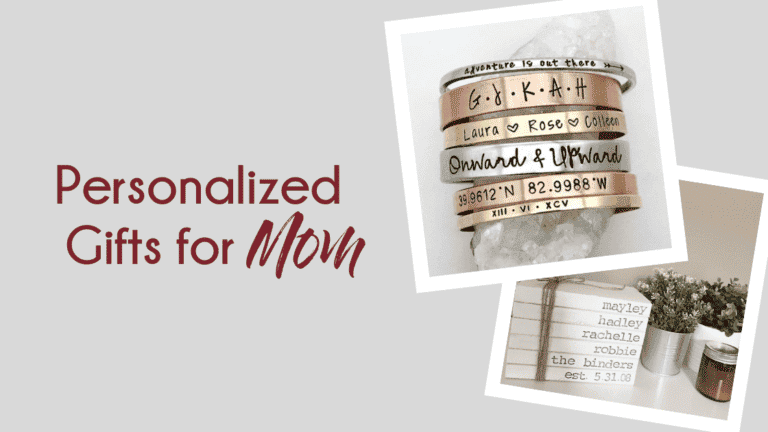The Hunt for Happiness: Is This All There Is?

Sometimes it’s hard to look at where we are in life – our marriages, our jobs, our financial situation, our weight, our accomplishments – and feel satisfied. We’re just not happy. But it’s possible to find a sweet spot where we’re spending more time doing what we’re good at and what we like to do. There are things we can do to shift not only our perspectives, but our situations.
I’m middle aged. I’m 40, so there’s no other way to put it anymore.
I guess if I hope to live past 80, I can tell myself I’m not yet to the middle of my life (technicality). I can spout that 40 is the new 30 (yeah, yeah, whatever).
No matter how I spin it, I’m still somewhere in those middle years of life. I got a good laugh out of a quote online this week about someone turning down the radio in the car so they could see better at night. I laughed because I TOTALLY UNDERSTOOD IT.
A big observation I have from my mid-life vantage point is that a lot of people my age don’t seem very happy. Let me clarify. I certainly don’t support a life spent chasing happiness at any cost, and I try hard not to confuse joy with happiness – but those are both topics for another post. I’m talking about a growing realization that a lot of middle-of-life people aren’t happy with where they are.
We’re looking at our careers, marriages, friendships, kids, health and accomplishments and feeling compelled to ask, “Is this all there is?” Or even worse, “Are things just going to kind of slide downhill from here on out?”
I hate the thought of looking in the mirror, or looking at the day’s calendar, and feeling like something isn’t right: regret or sadness or guilt or just a lack of satisfaction. This probably is right where mid-life crises and other bad decisions start to sneak in.
Research I’m doing for a new leadership program for my college students has given me some ah-ha moments lately.
Isn’t my student board the most fun looking group you’ve ever seen? I love these future world-changers.
The first lesson was a reminder about how easy it can be to get lost in life. In work. In parenting. In outside circumstances or other people. Busy lives move fast. We make one decision and then another and then another, with our heads down and our focus on getting things done. Then, when we look up, we’re not quite sure where we are, or how we got there.
Kristie and I talk a lot about being intentional. Stopping long enough, and often enough, to reflect and reset. I’ve done this in certain areas of my life, but I’m not sure I’ve really taken a look at who I am and whether I’m where I want to be in a long while.
Research says there are things we can do to find a sweet spot where we’re spending the majority of our time doing things that we’re good at AND that we like to do. If we spend about 80% of our time and energy in that sweet spot, we’re more productive and we’re happier. So I’m using this guideline as I develop a leadership training for my students:
If we have a good understanding of who we are and what we’re good at, we can be intentional about putting ourselves in a position to leverage our natural strengths and tendencies and feel happier.
Think of a grid with four quadrants.
I’m giving my business coach Lorry Belhumeur credit for this concept because I can’t find another original source.
If you can spend about 80% of your time and energy in your areas of unique brilliance, you’re doing things that energize and satisfy you. These are also the areas where you produce the greatest results. We can occasionally do the things we’re really good at but don’t love, or things we love and aren’t great at (sometimes we HAVE to do these things), but ultimately those things drain our energy and our time. Someone else can do them better, faster and with more satisfaction. This lesson applies to work life and home life.
Happiness Starts with Self-Awareness
I listen to all kinds of music, and every once in awhile a song hits me the very first time I hear it. That happened with Maren Morris’ The Bones. I just like it. The chorus keeps repeating:
“When the bones are good, the rest don’t matter.”
Full disclosure, the song is pretty clearly about a relationship, but it kept coming back to me as I thought through this post on happiness. If you know who you are and you set a strong foundation for yourself, the bones are good and the rest don’t matter.
I’m working with leadership coach and licensed psychologist Lorry Belhumeur on the training for my students, and we talk a lot about different assessments/personality tests and how to use the new perspectives they offer.
Different Personalities: Who am I?
The Jung personality test (check out the free online version) looks at four aspects of who you are and gives you a four-letter code, identifying one from each of the following pairs.
Introvert (I) —-> Extravert (E)
Do you get your energy from being with other people or on your own.
Sensing (S) —-> Intuition (N)
Do you rely more on information from external sources or internal thoughts.
Thinking (T) —-> Feeling (F)
Do you process information based more on facts or gut instinct.
Judging (J) —-> Perceiving (P)
Do you stick to the plan or like to improvise.
I’m an ESFJ, so according to the test, I’m outgoing, energetic, action-oriented and expressive. (Check) As a sensor, I live in the present and rely on fact, handling practical matters well and preferring when things are concrete and measurable. (Check) As a feeler, I let my concern for other people play a strong role. (Probably true). And as a judger, I prefer a lifestyle that is decisive, planned, orderly, organized and controlled. (Triple check)
Though my results didn’t shock me, they did remind me that there are 15 other combinations and ways people like to do life that don’t look the same as my ideal. It’s easy to get frustrated when others don’t act how I expect, or when life just doesn’t follow my natural preferences. But knowing who I am makes me better able to recognize the many other personality types out there and look for more positive ways to respond and interact.
The Four Tendencies: What Motivates Me?
Lorry also pointed me toward bestselling author Gretchen Rubin. Rubin is best known for two things, her Four Tendencies framework and her Happiness Project.
The Four Tendencies – Upholders, Questioners, Obligers and Rebels – help people understand what motivates them. Some people are internally motivated. They set their own New Year’s resolutions and stick to them even when no one is watching or cheering them on. Other people are externally motivated – they’ll only stick to those resolutions if they join a gym or have someone else holding their feet to the fire. Then there are people who aren’t internally or externally motivated: the Rebels.
If you want to see where you fall, you can take the Four Tendency online assessment for free. I took it, fully expecting to be an Upholder (high five to the rule followers out there) and found out that I’m actually a Questioner. I’m a rule follower IF I think the rules make sense and are valid. True statement. It explains why certain people and situations ignite rebellion in me, even when my general nature tells me to do what’s expected.
Rubin built a career on the study of happiness. Her best-selling book The Happiness Project just hit its 10-year anniversary.
The premise of Rubin’s experiment in this book is that we can find more happiness if we:
-
Prepare
Identify what brings us joy, satisfaction, engagement, growth, guilt, anger, boredom, remorse -
Make Resolutions
Put some concrete action plans in place to pursue stronger happiness in our life -
Keep Resolutions
Find ways to really stick with it
The four tendencies come in on Step 3, where knowing what motivates us helps us know how to best see happiness projects through.
Rubin’s Happiness Project brought her to the idea that happiness starts with self-awareness. So consider taking a couple assessments, or just setting aside a quiet hour to think about and list out what brings you joy and satisfaction. What gets you excited or best helps you grow? And on the flip side, what frustrates you or makes you feel made or guilty or just plain bored.
Then the next step is to put some action plans in place.
Happiness Can Depend on Our Relationships
Beyond the general sense of relief that can come with better understanding how and why key people in our lives operate differently than we do, relationships can be a place to get more intentional for a happier life.
If I’m an extrovert married to an introvert, or vice versa, we need to acknowledge those differences. Treating my spouse how I want to be treated could actually lead to a lot of unhappiness on a road paved with the best of intentions.
If I’m an Upholder, and my colleague is a Rebel, I need to change how I try to motivate that person to minimize head-butting and frustration at work — things that sap my happiness and satisfaction with my job.
Opposites Create Balance: Who do I need with me?
Traction and Rocket Fuel, by Gino Wickman, are also hot reads in the business world right now. Their magic formulas tie right back to better self-awareness and what to do once you understand more about who you are and how you operate.
Maybe you need a yin for your yang. Rocket Fuel talks about combining one leader who is a “visionary” with a second leader who is an “integrator” as rocket fuel for business success. (Wickman says one can’t fully function without the other.)
I heard about this book so much I put it on my Christmas list. My go-to source, the library, didn’t have a copy.
Want to know if you’re a visionary? Or an integrator? Me, and most of my students, were somewhere in the middle.
I’m more of an integrator and like to focus on the steps needed to get something done. If I don’t partner with a visionary, I rarely have big ideas or see the bigger picture on my own. Yes, I sometimes get frustrated with my visionary friends and colleagues because they don’t spent much time considering whether and how those ideas could actually get done before throwing out more ideas. But I appreciate what they bring to the table and feel happier about our interactions when I look at my relationship with them as symbiotic rather than at odds.
Happiness Means Embracing Yourself
We’re all wired differently, and no configuration brings less value. It might feel like it sometimes – maybe your personality doesn’t fit well with academia or the traditional business world. Or you happen to be in a family or work environment where your tendencies feel like the odd man out.
But those visionaries who may struggle to turn in school assignments or even graduate high school often go on to become the world’s greatest innovators and entrepreneurs. Introverts worldwide sit in CEO chairs, and extroverts stay home with newborn babies who don’t offer much in the way of interaction.
Happiness comes when we understand ourselves and seek out ways to shine our unique brilliance – whatever that looks like for each of us in each stage of life.
Introverts NEED to protect time alone to recharge. Questioners NEED to know the why behind what they’re doing. Visionaries NEED to find integrators to help them get things done. These are the ways we up our own happiness. And then we keep watching and reassessing as life and circumstances change – and as we change.
Finding Your Happiness Project
So my challenge to you is to find your 2020 Happiness Project. Take time to learn more about yourself, make a plan and see it through this year. My 2020 word of the year is positivity. I want both my thoughts and my words to focus more on things that are good, encouraging and helpful. I’m hoping that leaves less room for unhappiness, frustration or even fruitless gossip.
Step1: Prepare. I did the tests and reminded myself that as an extravert and an organizer, I’ll need to check my social, chatty nature and my obsession with organization to make this happen. On to Step 2: Put some concrete action plans in place to achieve my 2020 Happiness Project. Then Step 3: Find a Way to Make it Happen
Resources to help:
- Jung Personality Test
- Gretchen Rubin’s The Four Tendencies quiz
- Gretchen Rubin The Happiness Project book
- Gretchen Rubin’s Happier Podcast
- Rocket Fuel: Am I a visionary quiz
- Rocket Fuel: Am I an integrator quiz













